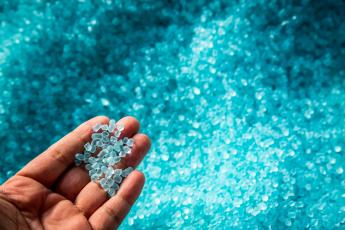Advances in petrochemicals – which are already helping transform medical science – are creating a new, more efficient and more cost-effective way to remove salt from ocean water. This breakthrough could eventually help make clean drinking water much more accessible at a time when the water crisis is a devastating reality for many, especially in developing nations. In fact, as many as three in 10 people around the world, or 2.1 billion, do not have access to safe drinking water, according to the World Health Organization.
Water is critical to sustaining human life, and while it makes up nearly 70 percent of our planet, only 2.5 percent of it is fresh water that can be used by humans. Of that 2.5 percent, much of it is trapped in glaciers and snowfields – leaving just 0.007 percent of the planet’s water available for drinking and irrigation.
But it’s not just the shortage of water that’s at issue, so much as a shortage of affordable water. According to the U.S. Geological Survey, scientists estimate that 30 percent of the world’s irrigated areas suffer from salinity problems, and solutions are costly.
With the global population rising, it’s clear we’ll need a substantial increase in resources to accommodate the growing number of crops to raise, mouths to feed and baths to fill. Scientists are looking at numerous options to alleviate water scarcity – and how to best do so in cost-effective ways. Perhaps one of the most promising comes from a new type of desalination – a process that removes salts and minerals to make ocean water more usable. Metal-organic frameworks – little known, next-generation materials — that use petrochemicals may hold the key to transforming the desalination process and combating the water crisis around the world.
Metal-organic frameworks, which are porous and consist of sponge-like crystals, are unique for many reasons. They contain the largest internal surface areas of any known substance (if unfolded, just one gram of the material could theoretically be thinly spread across an entire football field to cover it). Researchers have discovered that these permeable membranes can mimic the filtering function, or ion selectivity, of organic cell membranes. As a result, they can allow water molecules to pass through while capturing and storing chemical compounds – particularly, the salt and ions in the water that fills our oceans. Not only is this process more energy efficient than traditional desalination techniques, but it is more cost-effective as a result.
Scientists are currently studying two specific types of metal-organic frameworks for the purposes of desalination: UiO-66 and ZIF-88. These variations may differ in make-up, but neither of them would be possible without important petrochemical building blocks. UiO-66 membranes, which are named for the University of Oslo, are prepared using paraxylene to create terephthalate – a key component in the production of these frameworks, and which also happens to be the structure responsible for the most commons types of polyester we use today.
ZIF-88, on the other hand, stands for Zeolitic Imidazolate Framework and can be made using two different methods. In the first method, ethylene is mixed with oxygen and then water to produce ethylene glycol, which is critical in the production of glyoxal, a compound upon which the entire Imidazole structure is based. In the second method, toluene is used to create benzaldehyde, which is another vital component in producing the ZIF-88 membrane.
With their unique structure and potentially groundbreaking implications for the water crisis, it’s no wonder that scientists are eagerly exploring metal-organic frameworks and their future in desalination. These membranes have the potential to alleviate the world’s water crisis and do so in a cost-effective way that facilitates greater access for the two billion plus people experiencing water scarcity today. And without key petrochemicals, we simply couldn’t create these membranes – like so many other materials we rely on each day.


